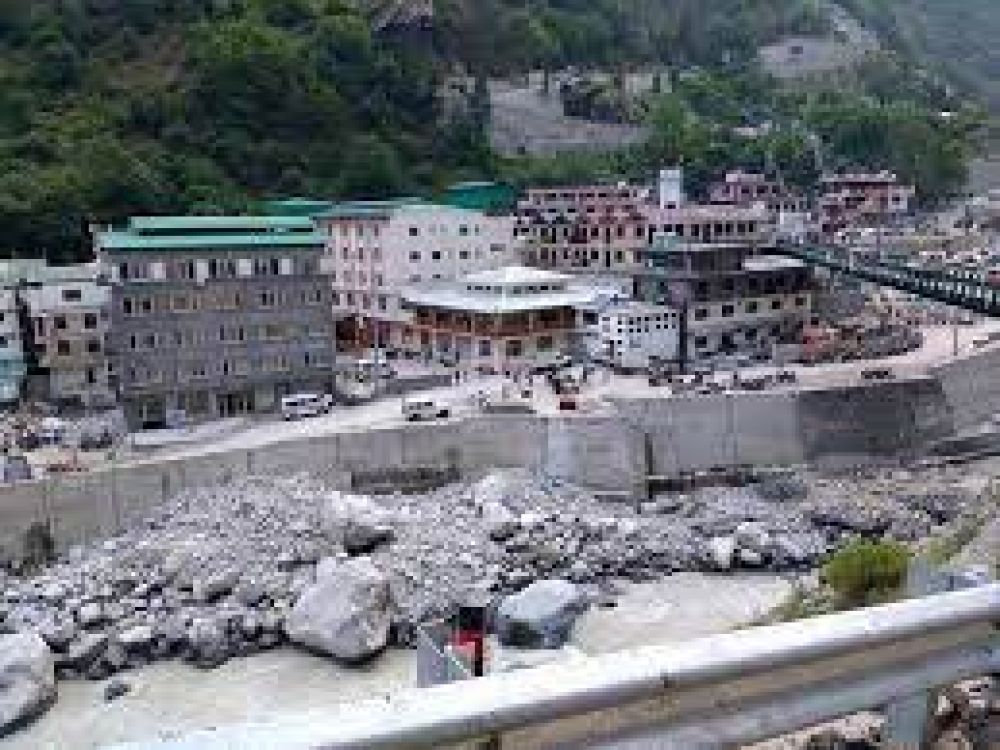

Govindghat, an important pilgrimage site for Hindus and Sikhs, is located in the Chamoli district of Uttarakhand, India. It serves as the gateway to Hemkunt Sahib, a revered Sikh shrine. Nestled amidst the mighty Himalayas, this region has been synonymous with spiritual pursuits and holistic healing for centuries.
Hemkunt Sahib's history as a pilgrimage destination can be traced back to the references in the Sikh holy scripture, the Guru Granth Sahib, where it is revered as a meditative retreat of Guru Gobind Singh Ji, the tenth Sikh Guru. However, it wasn't until the 20th century that it emerged as a prominent site of worship with the discovery of the lake and surrounding area by Sikh devotees.
The establishment of the Gurdwara Hemkunt Sahib was spearheaded by Major General Harkirat Singh and the renowned Sikh writer Bhai Vir Singh after the place was located by a devout Sikh soldier, Havildar Modan Singh, in the 1930s. The gurdwara was later constructed in the 1960s, and since then, it has been attracting thousands of pilgrims from all over the world, fostering tourism in this secluded Himalayan region.
The journey to Hemkunt Sahib begins at Govindghat, a bustling hub for pilgrims. Visitors can reach Govindghat after a picturesque drive through the sacred river confluences of Devprayag, Rudraprayag, Karnaprayag, and Joshimath. From Govindghat, a trek of approximately 19 kilometers leads to the sacred shrine of Hemkunt Sahib, which is situated at an altitude of 4,634 meters above sea level.
The trek is lined with lush greenery, interspersed with waterfalls and streams, presenting an enchanting view to the travelers. While the route may be challenging, the spiritual fulfillment upon reaching the shrine is unmatched, making the journey deeply rewarding for the devotees.
The seasonal operation of the shrine is a significant aspect of Hemkunt Sahib tourism. Due to heavy snowfall and extreme weather, the yatra (pilgrimage) is open only for a limited period between May and October. During these months, the area buzzes with activity, and adequate facilities are provided for the comfort and convenience of the pilgrims.
Tourism has immensely contributed to the local economy with the creation of jobs and infrastructure developments, such as lodging, eateries, and shops selling religious memorabilia and trekking essentials. The influx of pilgrims and tourists has spurred a parallel economic boost in ancillary services like porters, ponies, and local handicrafts.
In recent years, there has been a surge in eco-conscious tourism, with an emphasis placed on preserving the natural habitat and promoting sustainable travel practices. Modern amenities like helicopter services for the elderly and the differently-abled have increased accessibility to the once remote shrine. Furthermore, various NGOs and government bodies are involved in maintaining the sanctity of the region while balancing the needs of the visiting tourists.
The pilgrimage to Hemkunt Sahib is more than just a religious journey; it's an adventure that harmonizes the body, mind, and soul. As tourism continues to evolve, the spirit of devotion, combined with the awe-inspiring natural beauty, ensures that Govindghat and Hemkunt Sahib remain one of the most esteemed spiritual sites in India for generations to come.